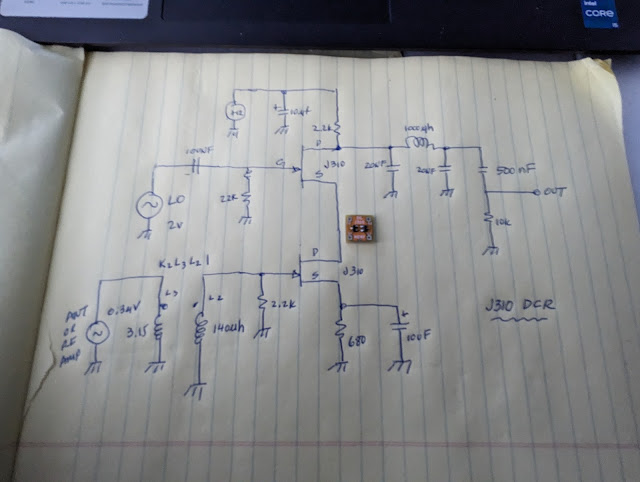The banter on the air these days often drifts (not LC VFO's drifting) to the rig they are running. Most often it is a Yaesu or Icom and at the higher end is the FLEX or Apache Labs. Notable very few if any homebrew rigs.
Have you ever wondered about the SSB rigs being used in 1961? Those who owned a gold mine or were single might have a Collins KWM-2*, but many had Drake, Hallicrafters, National and the ever budget conscious Swan Rigs.
Herb Johnson who started Swan Engineering later Swan Radio was a visionary and started off by producing monoband units for 75, 40 and 20 Meters. The aim was Mobile operation as this was Cycle 19. I saw my first ever Swan SW-120 in February 1963 when I was a senior at Penn State. One of the professors had the SW-120 mounted in a Sunbeam Alpine.
Later that same year when I headed out to Midway Island, I had a National NCX-3 -- should have bought the Swan 240!
About 15 years ago I bought a SW-120 and two years ago the SW-175 and two weeks ago a SW-140. Two were made in Benson, Arizona and the SW-175 was made in Oceanside. Thusly I have some of the earliest Swan radios.
The video below covers the recent purchase of the Swan SW-140 and what it took to fix it. The allure of these old radios is that you can actually fix them as they are not too complex and most parts are readily available.
If you are looking for a Digital Display, the AVC circuit or S Meter or Noise Blanker -- you won't find them. The radios were geared for mobile operation in what was then the US Phone Bands and are essentially a bare bone 100-watt SSB radio. The VFO drifted a bit and the 4 pole filter a bit wide. A user mod could add CW, but I thought it would not be very practical.
For the nut and bolt readers, the 100 series radios had 13 tubes and used a "grid block" method to steer tubes in the circuit path when used only for receive or only for transmit. A Relay essentially cut off various tubes by supplying a high value of negative grid voltage to the tubes being cut off. One set of contacts on that single relay disconnected the screen supply to the Final tube, a 6DQ5, during receive.
The transmit Pi Network was always connected to the antenna and the receiving circuits were connected to that Pi Network on the input side via a 3pF High Voltage ceramic cap. Thusly, if you peaked the Pi Network on receive it was darn close to the values needed for the max power output. The Receiver RF Amp tube was biased to cut off on transmit.
The tube line up drifted like a loose lady of the night (or poorly built LC VFO). The early radios used the 6BA6 in several sockets. Later tubes like the 6CB6 were used in the IF line up in place of the 6BA6. Some filament changes were made to accommodate the tube changes, In one radio you might have a 6BA6 and a later unit a 12BA6 in the same socket.
In the early builds the tune up was done by shifting the carrier oscillator and tripping the PTT all done with a DPST switch. That must have been unreliable as later a 12AV6 tube was added to create a Tone Oscillator for tune up. Since there was little room on the top of the chassis for this additional tube, the 12AV6 was mounted horizontally on a sub-chassis fitted underneath the chassis. The SWAN SW-140 being an early model (S/N 398-5) does not have the 12AV6.
Enjoy the video and see how I solved the rig problem to get it back on the air.
73's
Pete N6QW
* A friend once shared after graduating from college and a bachelor he had the following in his apartment: a chaise lounge for sleeping, a fork and a knife and a Collins KWM-2. He laments that life was good then!








%20-%20Copy.jpg)





.jpg)
.webp)
.jpg)


.jpg)